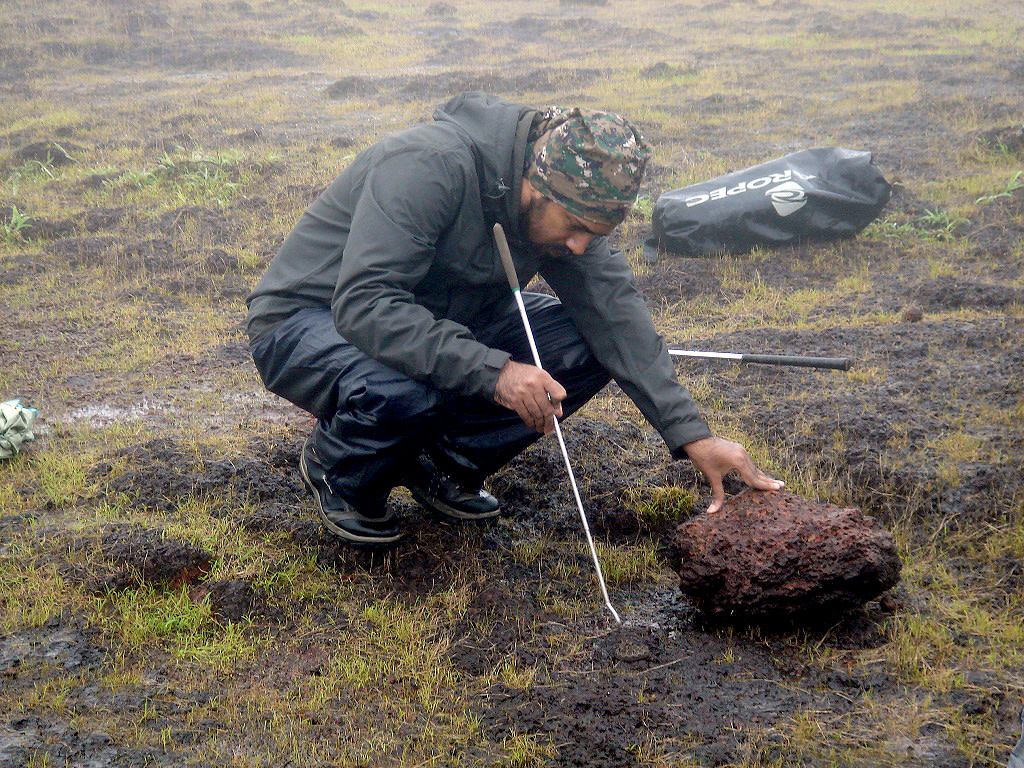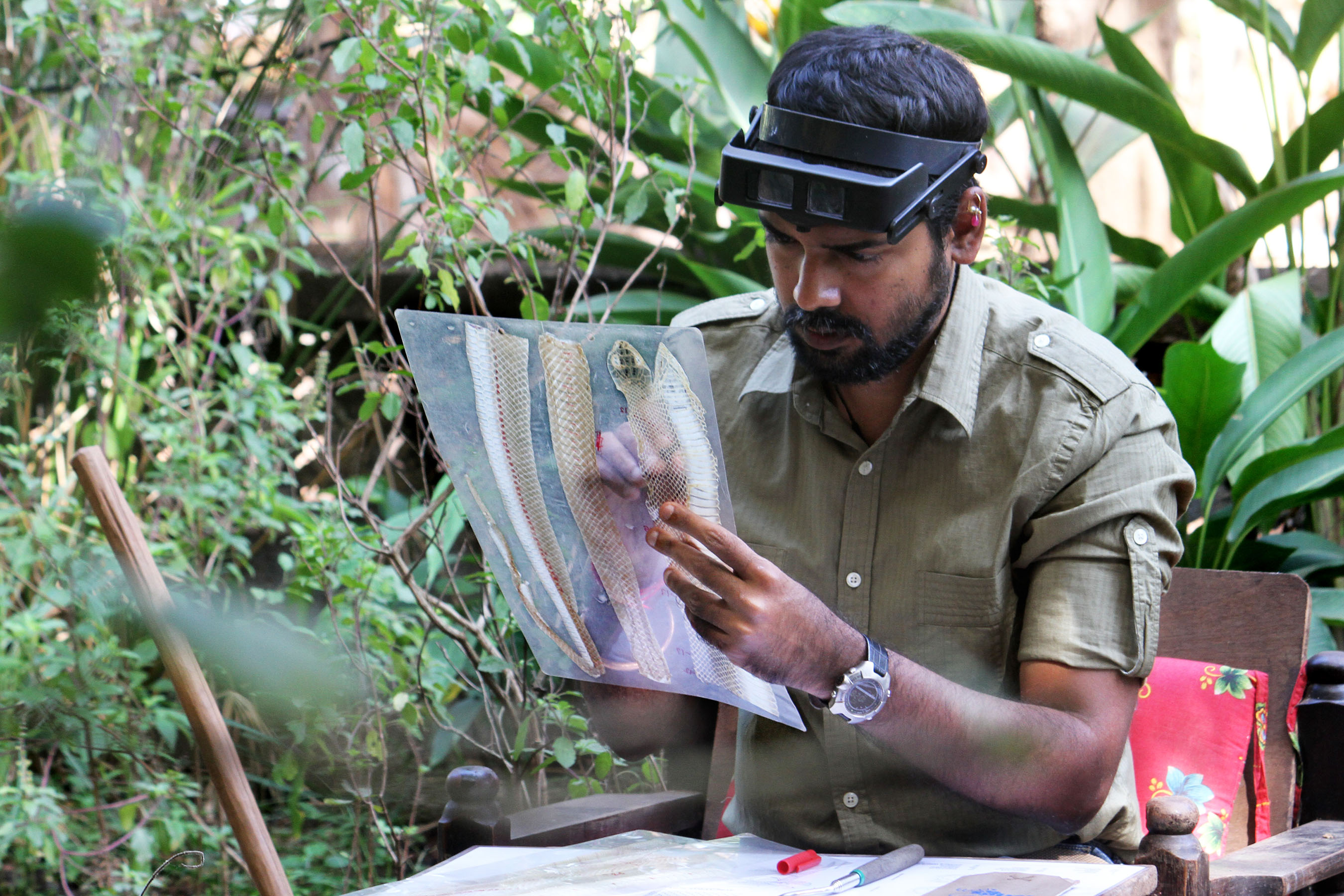 Listen to this article
•
15:34 min
Listen to this article
•
15:34 min
Growing up in Mapusa, Goa, Nirmal Kulkarni was twelve when he caught his first snake. He credits his grandfather with introducing him to wildlife at a very young age. During the holidays he would take him to visit places like Pune’s snake park or the Madras Crocodile Bank. Nirmal’s fascination with snakes led him to become a snake handler and the unofficial go-to person for reptile emergencies in the neighbourhood when he was a teen. “My friends and I would catch the snakes and release them into the forest. Slowly I got calls every time an owl entered a house or a civet landed on a roof,” he says. When word got around about the young wildlife rehabilitator, a popular children’s TV show at the time, featured Nirmal’s work. “That was a shot in the arm. As a kid, it was a huge deal to be on TV and in the local newspapers. I always tell people that what really got me into conservation is the glamour that came with it,” he says in jest. It was a few years later, when he was bitten by a venomous snake that Nirmal decided to take up formal training in the field.

Nirmal likes to identify himself a herpetologist first. He and his teams have discovered three new species of frogs and one snake.
Cover photo: Nirmal Kulkarni’s fascination for wildlife began in his childhood. Today, he considers facilitating the transformation of wildlife volunteers into long-term conservationists, an important part of his work. Photos courtesy: Nirmal Kulkarni
Starting early meant being the youngest person at many milestones that followed. Nirmal has been Goa’s youngest Hon. Wildlife Warden at 18, and at 21 he led a team of 200 people on a nature conservancy project in Chorla Ghat. Together with Captain Nitin Dhond who acquired the heavily mined and degraded land for the project, Nirmal and the team restored 800 acres of deforested land and converted it into a diverse private nature conservancy. “I consider myself fortunate to be have been trusted with such a project. We recently spotted a tiger with two cubs here,” he says proudly.
Today, although the 40-year-old is an ecologist, conservationist, wildlife photographer, author, chairman of a research centre, and director of a wildlife nature resort among other things, he identifies first as a herpetologist. Among his many awards is one from the Indian Herpetological Society for his conservation and research work in Goa.
As a herpetologist, the monsoon months (June to September) are crucial for Nirmal’s research and he always spends them in the Western Ghats. During April and May he likes to head off to Northeast India, and the rest of the year is spent attending to his many other roles and taking up new projects as they come. Among the many roles he has, Nirmal oversees Wildernest and Swapnagandha, two eco conscious resorts in Goa.

During a career spanning over 16 years, Nirmal has worked with local communities, researchers, students and government bodies. He tries to align various efforts in the field of science, conservation, photography, and activism to positively impact environmental work in the Western Ghats, specifically the Mhadei Bio Region.
Nirmal and his research teams have to their credit the discovery of three new species of frogs and one snake. “The first one was accidental; it didn’t seem to fit into our existing descriptions… Highlighting new species or writing about rare or endangered species helps draw attention to an area and its preservation,” Nirmal explains.
Integral to Nirmal’s conservancy work is local participation. He asserts that people need to be reminded that it is their land and that they can profit from its preservation.
“This is the part where my creative side, the photographer, comes to the fore. Most of my work is connected with people at the grassroots. Hardcore research and conservation work does not help get community support. If a farmer or a judge sitting in court must be affected by the killing of an elephant, they need to see visual content for them to be involved. People need to be reminded that biodiversity does not belong to the government; they only play a role in protecting it. Besides, support from a community also helps build pressure on the government to protect forests,” he says.

Nirmal uses photography to communicate the message that forests are not alien lands that people need to be disconnected from. When local participation happens through ecotourism, conservation outreach road trips, homestay networks, employing local nature guides etc., locals not only support their own livelihoods, but also the respective forests. This message about the importance and wonders of the forest is also conveyed in his book The Goan Jungle Book.
Dealing with governments and forces that endanger forests often means being dragged into land disputes and taking on the role of an activist. It’s a necessary role Nirmal plays, but he admits it isn’t his favourite. He wants his work to be defined by his research. “This means collating sound, unbiased data that could be used by researchers, teachers, governments, and even a court of law.” By establishing the Mhadei Research Centre, Goa’s first independent field research station, he created a platform that brings together naturalists, communities, and wildlife enthusiasts.
With a ringside view of the plight of our forests, Nirmal believes that it is time to address issues more effectively. “Natural resources are really stretched. We still haven’t acknowledged water as a problem area. We only have knee-jerk reactions like building dams or redirecting rivers. We must start looking for more sustainable solutions,” he asserts. Having said that, he also feels optimistic about the level of public consciousness around environmental issues today. “Today, there is rising awareness. I could speak about the problems to my daughter’s teacher or an IAS officer, and they’ll both be tuned in to what I’m saying. But there’s a long way to go, and so much more to do,” he says.






